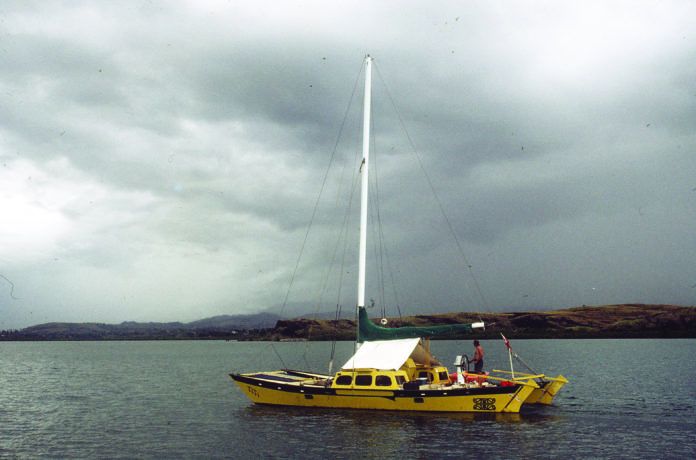There is no denying that Practical Sailor is a publication preoccupied with the material world. Our very existence depends on hulls, spars, sails, cordage, and all the other gear and gadgets that go into boats. One of the great ironies of my own fascination with boats and gear is that it is so far removed from the notions that first led me to land’s end. Each sailor has his own reasons for going to sea, but I like to believe that theres a common impulse behind that choice.
As Ishmael ponders in Melvilles Moby Dick:
“Why is almost every robust healthy boy with a robust healthy soul in him, at some time or other crazy to go to sea? Why upon your first voyage as a passenger, did you yourself feel such a mystical vibration, when first told that you and your ship were now out of sight of land? Why did the old Persians hold the sea holy? . . . Surely all this is not without meaning.”
I tend to think that boats like the James Wharram-designed Tiki 30 featured on pages 9-12 bring us closer to that meaning than more “civilized” craft. There is no plush upholstery on Dave and Jaja Martins home-built boat; no big-screen TV; no hot pressure shower; no generator. And, until the interior is finished, no soft bed. The Martins Finn is, without exaggeration, a finely crafted, sea-going tent.
Going to sea in any small boat is an act of rebellion. Not only does it run contrary to our landlubber instincts, but it entails-to varying degrees- breaking away from conventional society. As the philosopher-circumnavigator Bernard Moitessier put it, the sailor is “free on the right, free on the left, free everywhere.”
But this escape is also an act of communion. The sea is the last true wilderness, and for a modest investment, a small boat can carry us right in the heart of it. With only a thin veneer hull holding out the sea, the “wave-walking” Wharram Tiki transmits the Protean pulse that beats through all living things.
There is, of course, a more practical view of these boats.
Years ago, in the islands of Fiji, I spied a yellow Wharram cat anchored off the coast of idyllic Nomotu Island. On board, I met a happy-go-lucky Brit whose civilized demeanor belied his rough living quarters. A former accountant retreating to a feral existence, he was Tarzan, Lord Greystoke of the sea.
“Come aboard, and have some saki,” he said with a smile. “Ive got a batch that is ready to bottle.”
“Now there’s a self-sufficiency,” I thought, a British seaman who can brew his own booze.
My tongue well lubricated, I pitched Melvilles line into the night. Here, on this boat, inspired by the twin-hulled craft that sailed for millennia on these same waters, did not my new friend sense some primordial spirit? Did he not feel those “mystical vibrations” as the ocean swell heaved beneath his twin hulls?
He lifted his glass and thought for a moment: “No vibrations,” he answered, a glint in his eye, “just some creaks, but you soon get used to them.”
A pragmatic romantic with a good sense of humor, he was the perfect match for a Wharram.


































